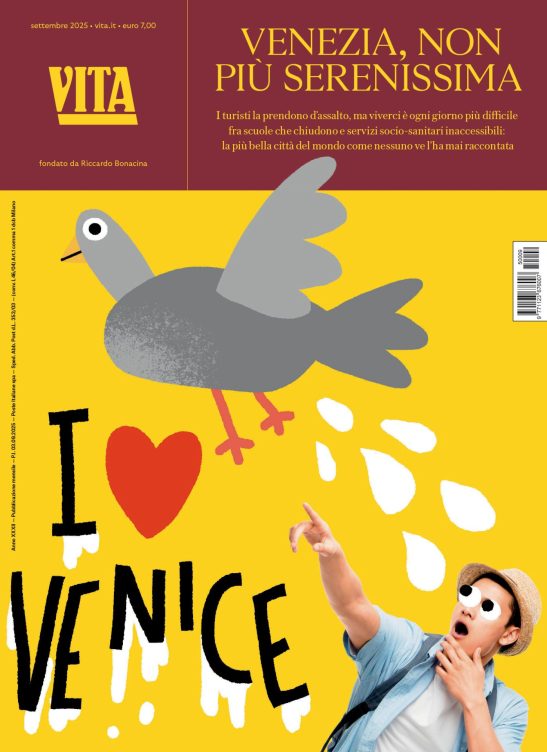Non profit
Milan: Women are better than skyscrapers
Women make up 52% of Milan's population and own the city's most precious knowledge: relationships. According to Gisella Bassanini it is these that can suggest truly constructive projects

Think about a skyscraper. One of the tallest, most beautiful, most original and most hi-tech of New York, Shanghai, Dubai or Tokyo. And then lower your gaze. Zoom down to the pavement where the skyscraper is built and then look at someone’s figure, their body. “Incarnate”. Gisella Bassanini pronounces the word clearly, to make you really feel the contrast between flesh, bones, nationality, skin colour, age and sex of the body and the abstractness of the skyscraper that towers over it. “The skyscraper, like many other buildings and infrastructure that is designed today, is neutral”, The body is not. “It is men and women’s bodies, be they able bodied or not, that is the real test that measures, promotes or fails a city”. So the question is: how does the body move in everyday life? What freedom does it have? What access (physical and time wise) does it have to services and how capable is the body of reconciling life and work?
Gisella Bassanini, an Italian architect and professor at Milan’s Politecnico, prefers architecture for everyday life – microarchitecture – to big buildings, that she considers to be neutral and abstract. An example? A new type of traffic light whose green light lights up the body of a woman, the graphic alter ego of the traditional little green traffic light man. The original idea belongs to an artist, Anna Scalfi, but Bassanini decided to adopt it as a provocatory symbol which she also uses to illustrate the front cover of her latest book, Per amore della citta’ (For love of the city). Though don’t make the mistake of confusing it for a feminist symbol.
“My work is not so much about the disadvantage of being female as about gender issues being an opportunity to look at difference in a more sensitive way. As well as to judge the quality of a project – and in the end, a city – by how gender is affected in practice by the city.
You live in Milan, a city that is about to host the Expo. Does it pass or fail the test of the female body?
According to official figures, 52% of Milan’s population is made up of women. Until a few years ago it was common for women to leave their jobs during their second pregnancy but today they tend to go home during their first. Women must ask for permission from their employers to have time off to take their children to the paediatrician as well as to carry out any administrative business, as public offices in Italy close during lunch break. Women are scared and perceive Milan as being unsafe. Their everyday life, the way they move through the city and their difficulty in managing work and family all indicate that the services and policies that organise people’s time should be managed differently. Women express their time in “kairos” rather than “kronos” and I think this is where we should start from.
Which direction should we take?
Gender approaches are aimed at escaping from an abstract way of designing and planning. They are aimed at spending public money better, directing the budget according to the population’s real needs, which are only discovered by counting how many women, children, elderly people and immigrants there are. And by asking the question: what is it that they need? To find an answer it is necessary to start from the body and its logic.
How could this approach affect the problem security?
My course at the Politecnico University has, for the last two years, been dealing with the how spaces for young people are designed. Young men and women tell me that they are scared of going out. But when I ask them why and suggest that something may have happened to them their answer is no. Their perception of danger is greater than the danger that is actually out there, and they live in fear. It is our duty to make them think about this fear and ask them why they are afraid of these spaces. The process of coexistence must be accompanied by a more complex and integrated approach to public space design and use.
A feminine approach?
Women offer and ask for relationships to be placed at the centre of living space design projects as this enables connections to be made between home and city, private and public, subjective and collective, expert knowledge and common knowledge, reality and desire.
Find out more: www.naba.it
Translation by Cristina Barbetta
17 centesimi al giorno sono troppi?
Poco più di un euro a settimana, un caffè al bar o forse meno. 60 euro l’anno per tutti i contenuti di VITA, gli articoli online senza pubblicità, i magazine, le newsletter, i podcast, le infografiche e i libri digitali. Ma soprattutto per aiutarci a raccontare il sociale con sempre maggiore forza e incisività.
